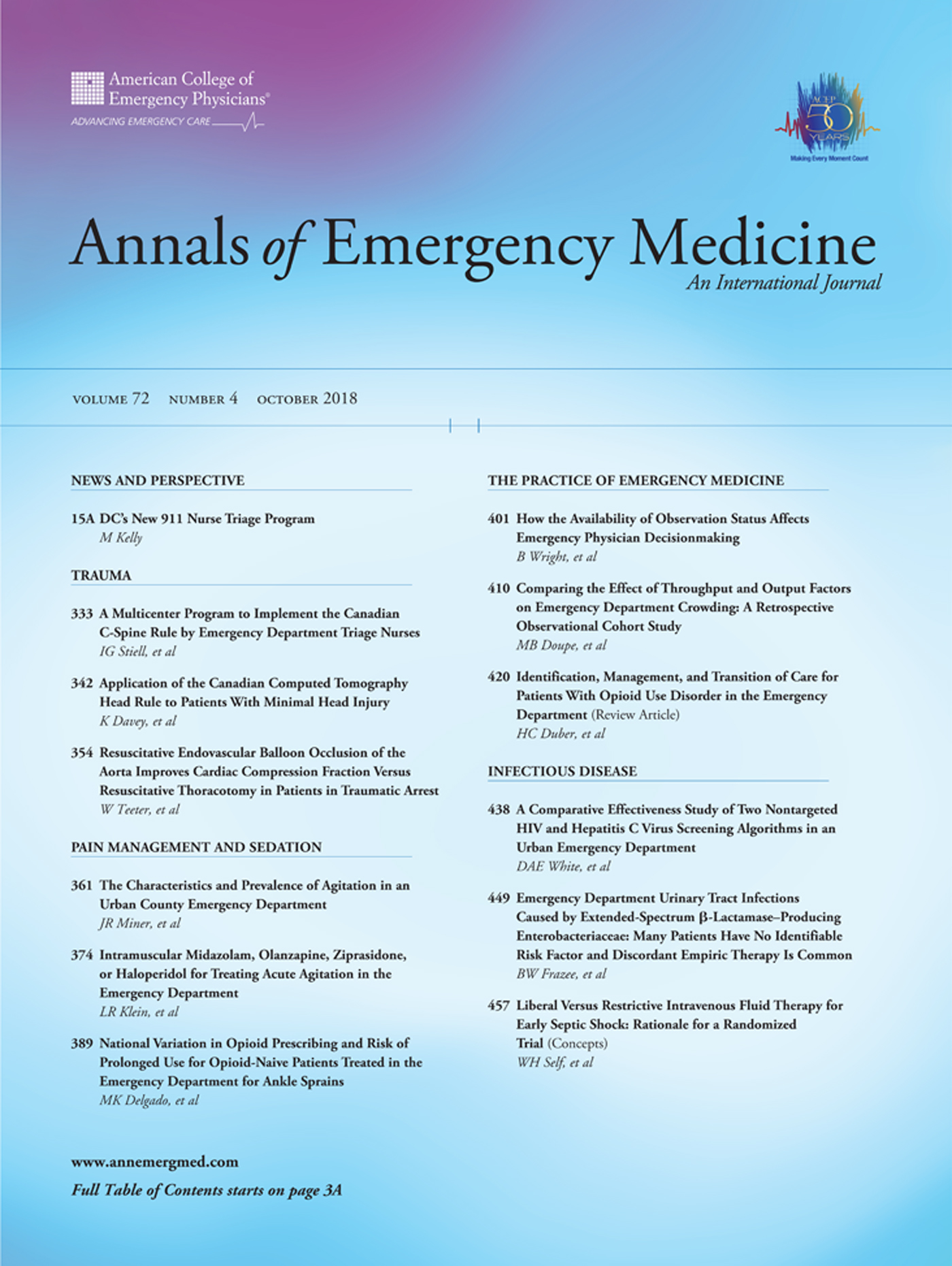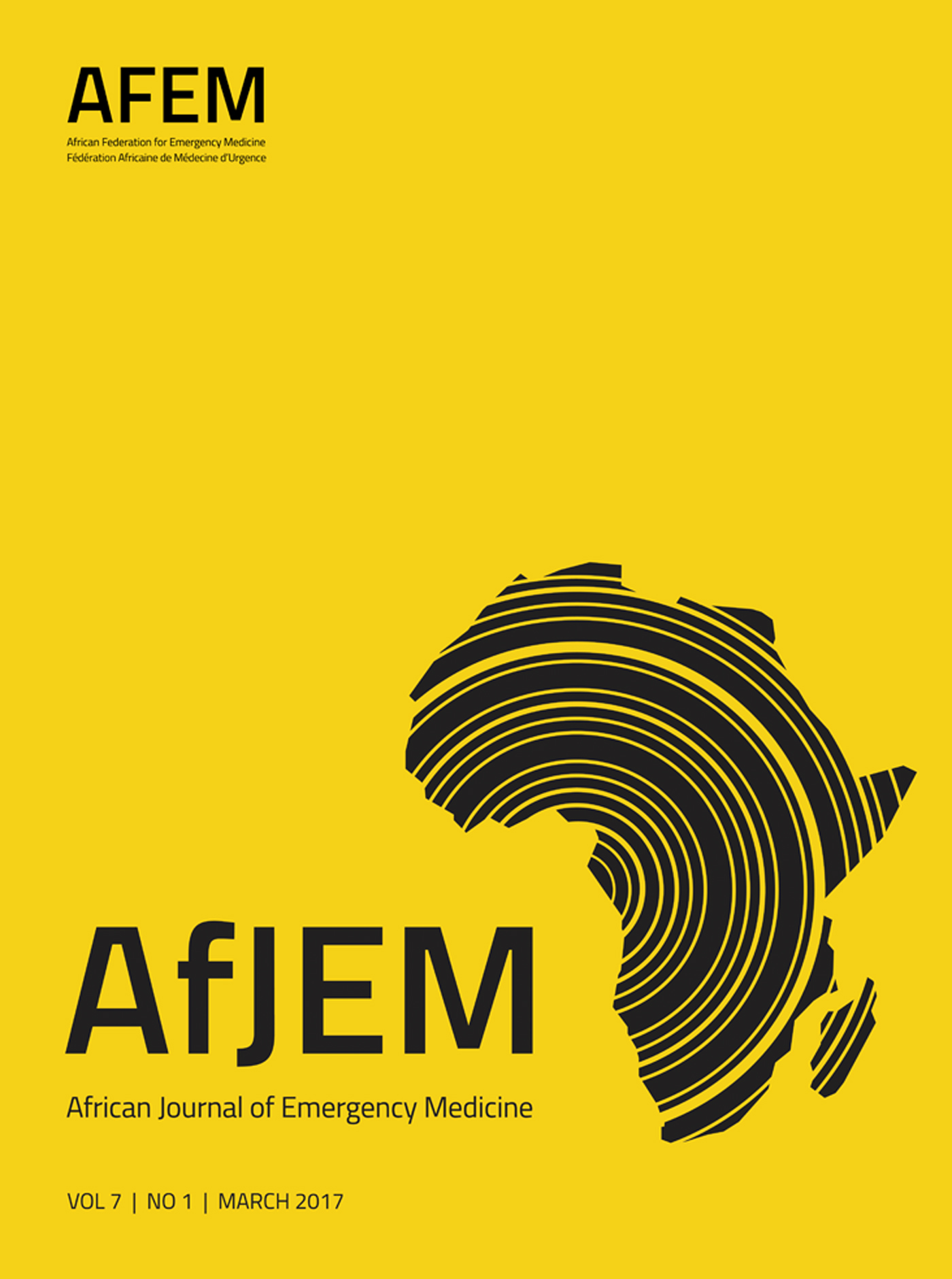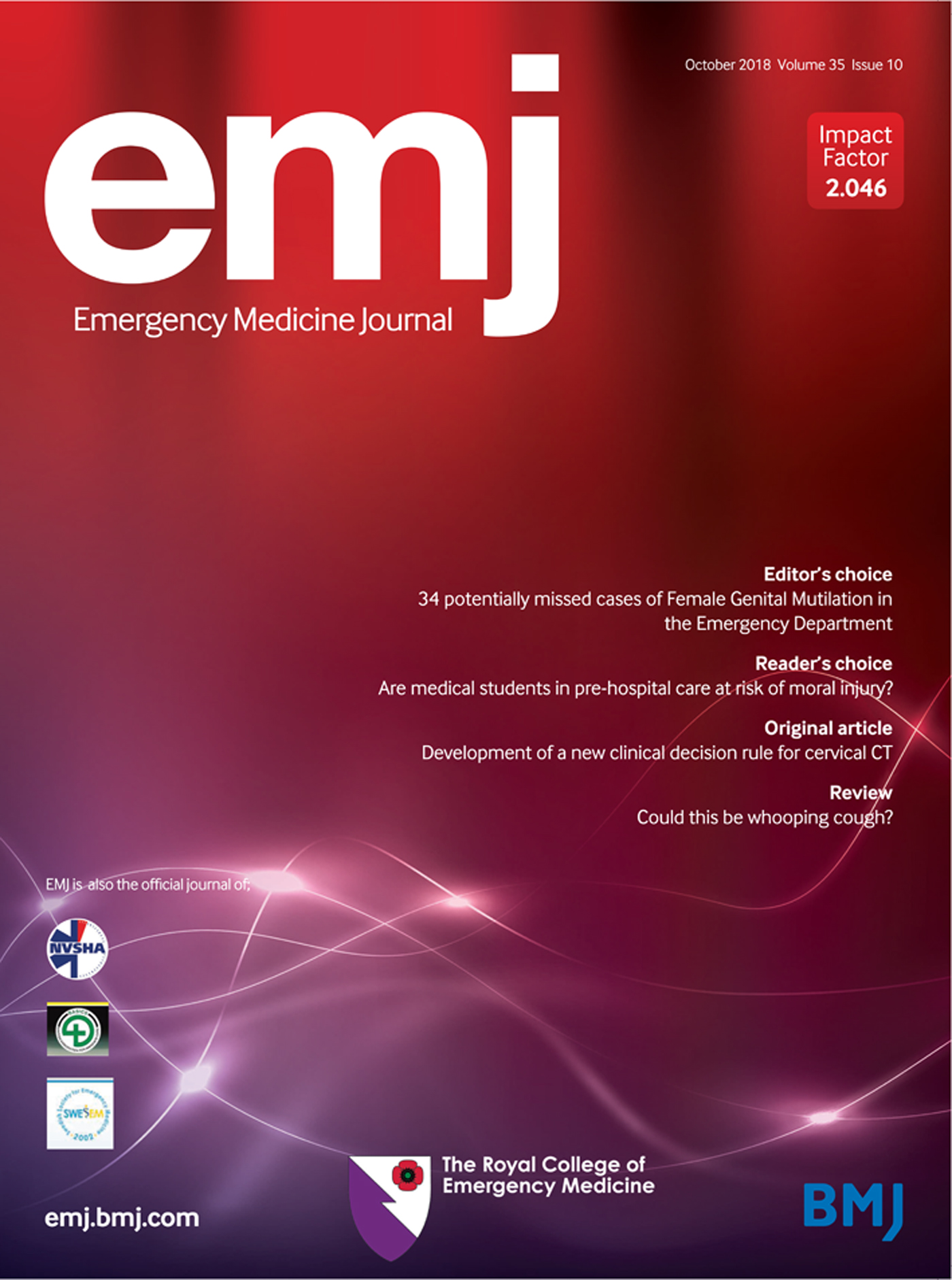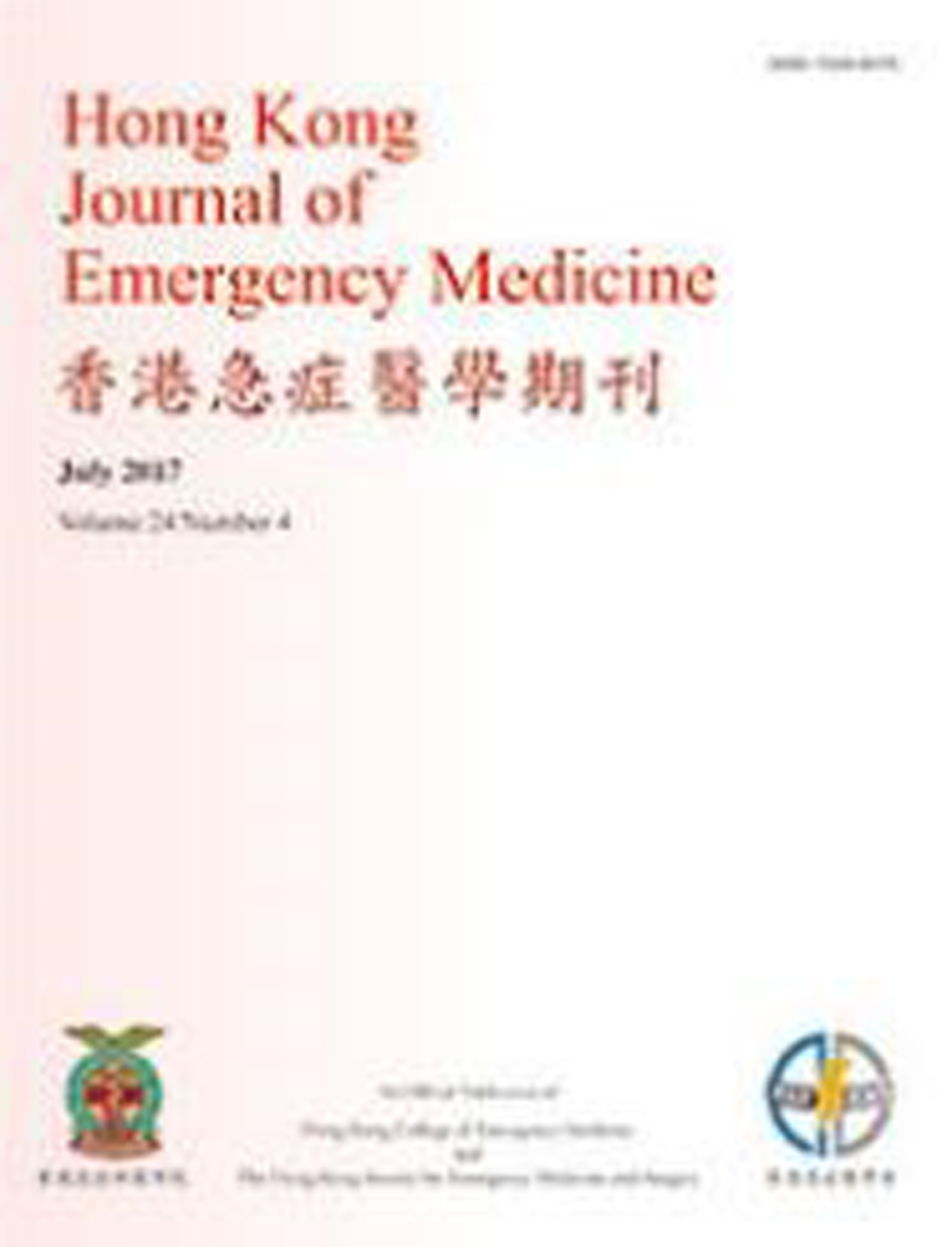Annals of Emergency Medicine

Official journal of the American College of Emergency Physicians
(The print version of this article has been scheduled for February 2019)
Randomized Controlled Trial of Intravenous Acetaminophen Versus Intravenous Hydromorphone for the Treatment of Acute Pain in the Emergency Department
Douglas P. Barnaby, Andrew E. Chertoff, Andrew J. Restivo, Caron M. Campbell, Scott Pearlman, Deborah White, Polly E. Bijur, E. John Gallagher
https://doi.org/10.1016/j.annemergmed.2018.06.019
Study objective: As clinicians look to nonnarcotic analgesics in the emergency department (ED), it is essential to understand the effectiveness and adverse effects of nonopioid medications in comparison with existing opioid treatments. Studies of intravenous acetaminophen for acute pain in the ED demonstrate mixed results and suffer from small sample sizes and methodological limitations. This study compares intravenous hydromorphone with intravenous acetaminophen in adult ED patients presenting with acute pain.
Methods: This was a prospective, randomized, clinical trial comparing 1 g intravenous acetaminophen with 1 mg intravenous hydromorphone for treatment of adults with severe, acute pain in the ED. The primary outcome was between-group difference in change in numeric rating scale from baseline to 60 minutes postadministration of study medication. Secondary outcomes included the difference in proportion of patients in each group who declined additional analgesia at 60 minutes, received additional medication before 60 minutes, and developed nausea, vomiting, or pruritus.
Results: Of 220 subjects randomized, 103 patients in each arm had sufficient data for analysis. At 60 minutes, the mean decrease in numeric rating scale pain score was 5.3 in the hydromorphone arm and 3.3 in the acetaminophen arm, a difference of 2.0 (95% confidence interval [CI] 1.2 to 2.7) favoring hydromorphone. A greater proportion of patients in the hydromorphone arm also declined additional analgesia at 60 minutes (65% versus 44%; difference 21%; (95% CI 8% to 35%). There was no difference in the proportion of patients receiving rescue analgesia before 60 minutes. Significantly more subjects in the hydromorphone group developed nausea (19% versus 3%; difference 16%; 95% CI 4% to 28%) and vomiting (14% versus 3%; difference 11%; 95% CI 0% to 23%).
Conclusion: Although both 1 mg intravenous hydromorphone and 1 g intravenous acetaminophen provided clinically meaningful reductions in pain scores, treatment with hydromorphone provided both clinically and statistically greater analgesia than acetaminophen, at the cost of a higher incidence of nausea and vomiting.
African journal of emergency medicine

The official journal of the African Federation for Emergency Medicine, the Emergency Medicine Association of Tanzania, the Emergency Medicine Society of South Africa, the Egyptian Society of Emergency Medicine, the Libyan Emergency Medicine Association, the Ethiopian Society of Emergency Medicine Professionals, the Sudanese Emergency Medicine Society, the Society of Emergency Medicine Practitioners of Nigeria and the Rwanda Emergency Care Association
Emergency health education in a conflict stricken environment: A situational analysis
Muya I, Garside J, Van-der Plas M, Mohammed MA
Afr J Emerg Med 2018;8(4):129-33
https://doi.org/10.1016/j.afjem.2018.05.001
Introduction: Bosasso General Hospital is located in Puntland Somalia, an area affected by prolonged civil conflict, terrorism, clan fighting and piracy. International evidence highlights that staff skills and competence may have a significant impact on patient outcomes however there has been little research on emergency education in such an austere and volatile environment. The purpose of this study therefore was to identify current practices and gaps in delivering emergency medicine education in this resource-deprived environment.
Methods: A mixed methods approach was adopted to inform convergent parallel data collection techniques including questionnaire (n = 16), key informant (n = 5) and focus group interviews (n = 16). Data analysis, following data triangulation, produced descriptive quantitative statistics of themes such as emergency care, educational provision, enablers and barriers.
Results: The research showed that among health care staff at the hospital, 19% of the nurses felt that visiting nurses offer some knowledge on emergency care, while 38% of knowledge was gained from visiting doctors. Regarding knowledge of emergency medicine, 88.9% of the nurses felt that emergency medicine is basically first aid.
Discussion: Emergency care was perceived by the majority as essentially ‘first aid’. Many indicated that they received little or no regular or formal training on emergency care and related essential topics. In terms of challenges faced in delivering emergency care education demonstrated a common factor in the limited resources available which included lack of teaching materials, reading materials, online resources, health care professionals, equipment and mentors. Conclusions drawn suggest that the knowledge of emergency medicine by front line professionals is limited. Therefore, the development of field curricula, practical and theoretical training by visiting practitioners, provision of additional teaching aids, tools and equipment, integration of multiple disciplines in training and financial resource mobilisation would be beneficial in improving knowledge, attitudes and practices of emergency care.
Reproduced with permission
Emergency Medicine Journal

Official Journal of the Royal College of Emergency Medicine
Comparison of the use of lung ultrasound and chest radiography in the diagnosis of rib fractures: a systematic review
Ceri Battle, Simon Hayward, Sabine Eggert, Phillip Adrian Evans
http://dx.doi.org/10.1136/emermed-2017-207416
Introduction: It is well-recognised that the detection of rib fractures is unreliable using chest radiograph. The aim of this systematic review was to investigate whether the use of lung ultrasound is superior in accuracy to chest radiography, in the diagnosis of rib fractures following blunt chest wall trauma.
Methods: The search filter was used for international online electronic databases including MEDLINE, EMBASE, Cochrane and ScienceDirect, with no imposed time or language limitations. Grey literature was searched. Two review authors completed study selection, data extraction and data synthesis/analysis process. Quality assessment using the Quality Assessment of Diagnostic Accuracy Studies Tool (QUADAS-2) was completed.
Results: 13 studies were included. Overall, study results demonstrated that the use of lung ultrasound in the diagnosis of rib fractures in blunt chest wall trauma patients appears superior compared with chest radiograph. All studies were small, single centre and considered to be at risk of bias on quality assessment. Meta-analysis was not possible due to high levels of heterogeneity, lack of appropriate reference standard and poor study quality.
Discussion: The results demonstrate that lung ultrasound may be superior to chest radiography, but the low quality of the studies means that no definitive statement can be made.
Emergencias
emergencias.portalsemes.org/English

Official Journal of the Spanish Society of Emergency Medicine
Patients with acute heart failure discharged from the emergency department and classified as low risk by the MEESSI score (multiple risk estimate based on the Spanish emergency department scale): prevalence of adverse events and predictability
Òscar Miró, Víctor Gil, Xavier Rosselló, Francisco Javier Martín-Sánchez, Pere Llorens, Javier Jacob, Pablo Herrero, Sergio Herrera Mateo, Fernando Richard, Rosa Escoda, Marta Fuentes, Enrique Martín Mojarro, Lluís Llauger, Héctor Bueno, Stuart Pocock, en representación del grupo ICA-SEMES
Cited: Miró O, Gil V, Rosselló X, Martín-Sánchez FJ, Llorens P, Jacob J, et al. Patients with acute heart failure discharged from the emergency department and classified as low risk by the MEESSI score: prevalence of adverse events and predictability Emergencias. 2019;31:5-14.
Objective: To determine the rate of adverse events in patients with acute heart failure (AHF) who were discharged from the emergency department (ED) after classification as low risk according to MEESSI score (multiple risk estimate based on the Spanish ED scale), to analyze the ability of the score to predict events, and to explore variables associated with adverse events.
Methods: Patients in the EAHFE registry (Epidemiology of Acute Heart Failure in EDs) were stratified according to risk indicated by MEESSI score in order to identify those considered at low risk on discharge. All-cause 30-day mortality and revisits related to AHF within 7 days and 30 days were recorded. The area under the receiver operating characteristic curve (AUC) was calculated for the MEESSI score's ability to predict these events. Associations between 42 variables and 7-day and 30-day revisits to the ED were analyzed by multivariable logistic regression.
Results: A total of 1028 patients were included. The 30-day mortality rate was 1.6% (95% CI, 0.9%–2.5%). The 7-day and 30-day revisit rates were 8.0% (95% CI, 6.4%–9.8%) and 24.7% (95% CI, 22.1%–25.7%), respectively. The AUCs for MEESSI score discrimination between patients with and without these outcomes were as follows: 30-day mortality, 0.69 (95% CI, 0.58–0.80); 7-day revisiting, 0.56 (95% CI, 0.49–0.63); and 30-day revisiting, 0.54 (95% CI, 0.50–0.59). Variables associated with 7-day revisits were long-term diuretic treatment (odds ratio [OR], 2.45; 95% CI, 1.01–5.98), hemoglobin concentration less than 110 g/L (OR, 1.68; 95% CI, 1.02–2.75), and intravenous diuretic treatment in the ED (OR, 0.53; 95% CI, 0.31–0.90). Variables associated with 30-day revisits were peripheral artery disease (OR, 1.74; 95% CI, 1.01–3.00), prior history of an AHF episode (OR, 1.42; 95% CI, 1.02–1.98), long-term mineralocorticoid receptor antagonist treatment (OR, 1.71; 95% CI, 1.09–2.67), Barthel index less than 90 points in the ED (OR, 1.48; 95% CI, 1.07–2.06), and intravenous diuretic treatment in the ED (OR, 0.58; 95% CI, 0.40–0.84).
Conclusion: Patients with AHF who are at low risk for adverse events on discharge from our EDs have event rates that are near internationally recommended targets. The MEESSI score, which was designed to predict 30-day mortality, is a poor predictor of 7-day or 30-day revisiting in these low-risk patients. We identified other factors related to these events.
Keywords: Acute heart failure. Emergency department. Risk assessment. Mortality. Emergency revisits. Hospitalization.
Hong Kong Journal of Emergency Medicine

Official Journal of the Hong Kong College of Emergency Medicine
A preliminary report of clinical experience in managing patients with sepsis and septic shock in emergency medicine ward
Chun Kit Li, Oi Fung Wong, Shing Ko, Hing Man Ma and Chau Hung Albert Lit
Background: Sepsis and septic shock are common causes of hospital admission, morbidity, and mortality, posing a significant burden on the health-care systems. Therefore, identifying factors associated with significant brain injury in geriatric patients in A&E triage is crucial in providing timely care to these patients.
Objective: The objective of this study was to report the clinical experience of management and outcomes of sepsis patients in the emergency medical ward of a community hospital. The risk factors associated with adverse outcomes of sepsis patients were also analyzed.
Methods: This was a retrospective cohort study of patients with sepsis or septic shock managed in the Emergency medical ward of North Lantau Hospital from 1 March 2015 to 31 March 2017. Their characteristics, clinical outcomes, risk factors associated with in-hospital mortality, 28-day mortality, and prolonged hospital stay (>14 days) were analyzed.
Results: standard deviation, 16.7; range, 34–100) years. The mean Sequential Organ Failure Assessment score of all the cases was 4.5 (standard deviation, 2.4); range, 2–11). The most common source of infection was pneumonia (50%). During the stay in the emergency medical ward, 35 cases (49%) required vasopressor support for management of septic shock, and 12 cases required non-invasive ventilation (NIV) support. Five patients were eventually transferred to tertiary hospital (Princess Margaret Hospital) for further management. There were five in-hospital mortality cases and two 28-day mortality cases. From the univariate analysis, factors associated with in-hospital mortality included Sequential Organ Failure Assessment score >6 (p < 0.000), increasing number of organ dysfunction (p < 0.000), presence of chronic liver disease (p = 0.025), respiratory dysfunction during admission (p = 0.028); factors associated with 28-day mortality were advanced age (p < 0.000), increasing number of organ dysfunction (p = 0.033), presence of congestive heart failure (p = 0.004), and the presence of cancer (p = 0.034); factors associated with prolonged hospital stay were advanced age, presence of chronic obstructive airway disease (p = 0.003), advanced age (p = 0.041), and the use of NIV support (p = 0.001). In multivariate analysis, weak associations between in-hospital mortality and Sequential Organ Failure Assessment score >6 (p = 0.226) and increased number of organ dysfunction (p = 0.108) were demonstrated; there was a trend of prolonged length of stay with increased age (p = 0.139).
Conclusion: Our experience and knowledge in managing sepsis patients in the emergency medical ward with implementation of critical care bed services increased significantly. These preliminary results demonstrated that, with appropriate patient selection, sepsis patients can be safely managed in the emergency medical ward. Further study with larger sample size is needed to identify risk factors of adverse outcomes in this group of patients managed in the emergency medical ward.
Keywords: Emergency medicine ward, critical care, sepsis, outcomes, risk


